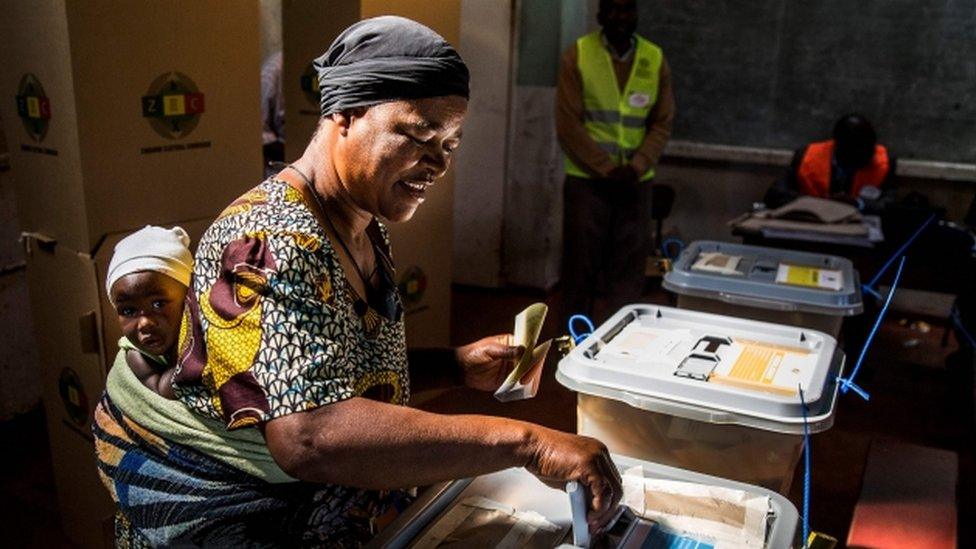Zimbabwe elections: The bones that haunt the country
- Published
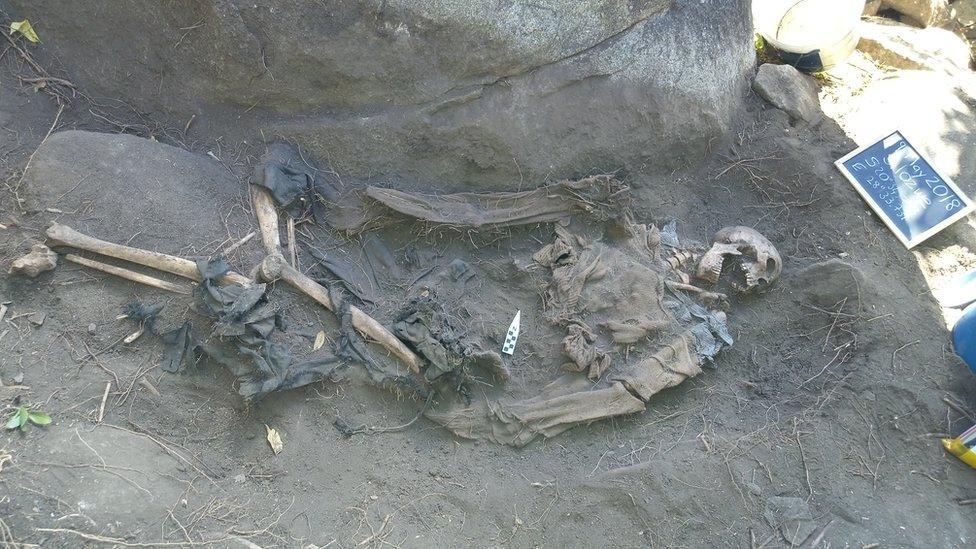
The remains of Julius Mvulo Nyathi - killed in 1984 at the age of 52.
At the bottom of a crevice in the rocks - just as the eyewitness had said - was a parcel of bones, wrapped in a shirt. It was a shirt just like the one Fanta Ndlovu was wearing when he went missing 33 years ago.
Just three days before Zimbabwe's historic election - the first in decades without Robert Mugabe on the ballot paper - it had been a short but challenging climb through granite boulders up a small, steep hill by the entrance to a homestead.
Forensic anthropologist Sheri Eppel from the Ukuthula Trust first shone her torch and then clambered down into the crevice for a closer look.
"You can see something that's wrapped in clothing or a blanket," she shouted up from the hole.
"It seems to me that this story could well be true - that these are human remains."
Their search for a man killed during the Matabeleland massacres stopped in its tracks until Fanta's family could be called, a full exhumation performed, and to establish if the remains really did belong to Fanta Ndlovu.

It had been a Friday in February 1984 when the Fifth Brigade came to Silozwe and four men disappeared.
Silozwe is in Zimbabwe's southwestern province of Matabeleland, and the army's fifth brigade was a notorious North Korean-trained unit which killed thousands of people under the command of Robert Mugabe and his inner circle.
For decades the remains of these four men lay in shallow graves while their relatives could never mourn their "angry dead" - those whose spirits were not properly laid to rest.
Only now are the bodies starting to be exhumed, the ghosts being exorcised and the families are finding peace.
Silozwe is a beautiful place at the heart of the Matobo Hills where massive outcrops of granite flow through the landscape and huge boulders balance in towers where two billion years of erosion has left them stranded.
But 'Gukurahundi' etched a terrible scar across Matabeleland - memories that the government spent decades trying to repress.
Gukurahundi is the Ndebele name for the ethnic massacres perpetrated by the Fifth Brigade - killings by Robert Mugabe's Shona forces who won the fight for power in a newly independent Zimbabwe.
It's not known how many died in the early 1980s, as a newly dominant Zanu crushed its rival Ndebele rebel group ZAPU to dominate politics as a one-party state under Zanu-PF - but it is thought to have been many thousands.
Among those killed were the four men in Silozwe: Matchatha Tshuma, a preacher in his 60s; Simimba Ndlovu, a 32 year old local garden worker; Julius Mvulo Nyathi, an unusually tall man of 52; and Fanta Ndlovu who was in his 20s.
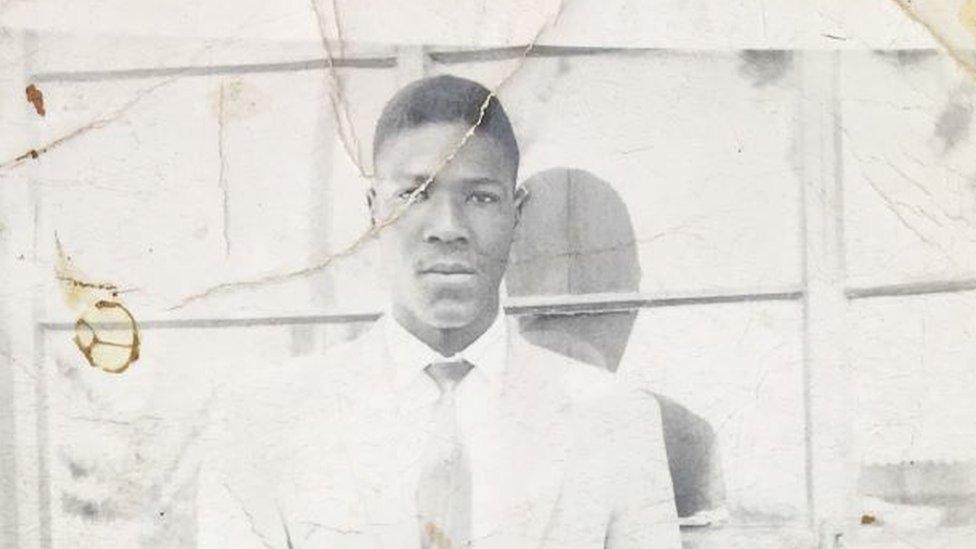
The only remaining photograph of Julius Mvulo Nyathi at the age of 18.
Matchatha had been the first to be found. He hadn't been buried and scavengers had been tearing at his remains.
His family collected what they could - it all fit into a plastic bag.
Julius was next.
It was in May this year, just a few months after new president, Emerson Mnangagwa, had signed a bill into law, authorising the National Peace and Reconciliation Commission (NPRC) to begin it's constitutionally-authorised work.
After decades of silence, the family had asked for the people from the Ukuthula Trust to come and exhume his body - and lay him to rest properly in the right place.
Amid prayers and watched by his son Chris, Julius' large frame was revealed as a thin layer of soil was removed from his shallow grave.
They immediately knew it was him - from the khaki national park jumper he'd been wearing - and because he was such a big man.
"It is very painful if a human being lying, unburied, for the past 34 years," said Chris Nyathi who said he felt great relief recovering the bones. He will rebury them at home this week.
"I feel I am now alive. Before I could not understand myself - if I would leave this world before my father was reburied I wasn't going to be happy. My soul will not rest."
They thought Simimba Ndlovu was buried in the same grave, but he was not.
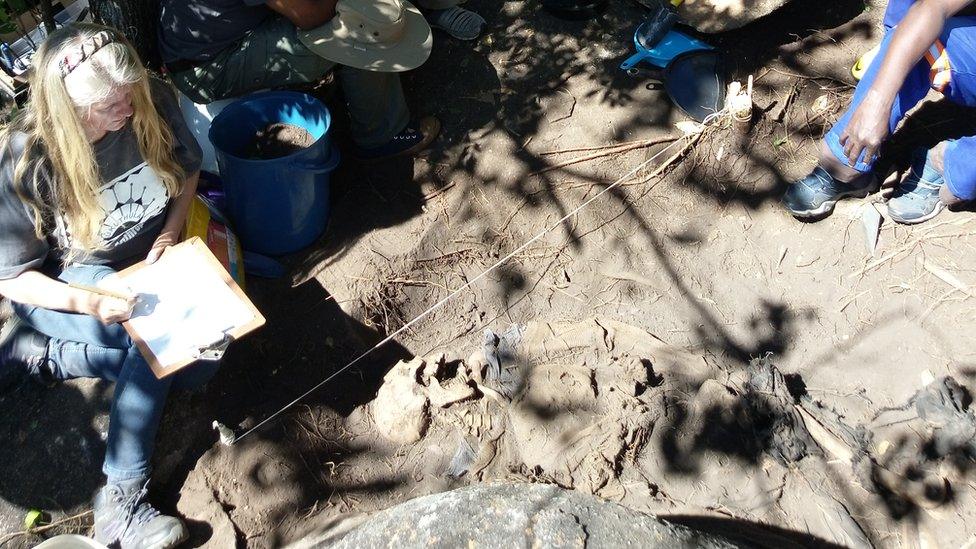
They thought Fanta Ndlovu might never been found, but after his family saw the closure Chris found from finally finding his father, they broke their silence and identified a small crevice in the rocks.
"It is very important to our people here - especially the fact that they can now unblock the mourning process, because people didn't mourn," said Nico Ndlovu who works with the Ukuthula Trust and met the man who knew where Fanta's bones lay.
It has helped people slowly start to talk about the atrocities, but it has also turned attention on Emmerson Mnangagwa, who was head of the intelligence services when the killings took place.
He denies involvement and there is no 'smoking gun' pointing to any direct role or complicity in the Matabeleland massacres, but historian Stuart Doran insists there are questions to be answered.
He has researched thousands of previously classified diplomatic documents from the UK, Canada, Australia and apartheid South Africa, as well as from the Zimbabwean intelligence services.
"Is there a document where, with Mnangagwa's signature with him saying I hereby authorise the massacre of Ndebele speaking civilians in Matabeleland?
"No there isn't that, but there is documentary evidence, there are witnesses to his involvement in these matters and I think when you stack all the evidence together it's highly credible."
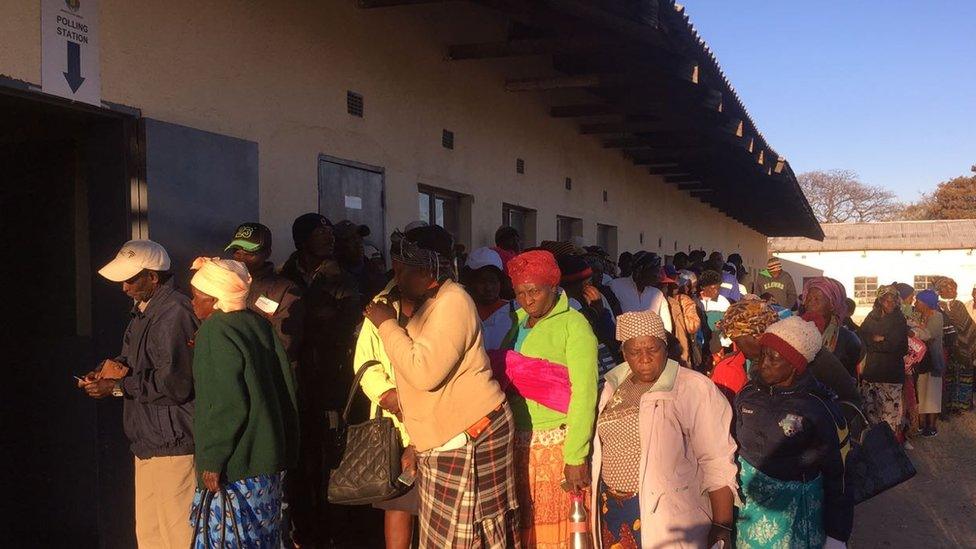
Voting at the Silozwe Polling station
There are many issues people in Matabeleland considered before they cast their votes.
The economy has collapsed, most men of working age have left to work in neighbouring South Africa or Botswana.
But an unreconciled past leaves people feeling like second class citizens and will remain relevant until there's an apology, a proper truth and reconciliation process and an explanation.
"For 38 years Mugabe sought to put a lid on this and it hasn't helped," said former opposition politician Paul Temba Nyathi.
"It means that the memories continue to be extremely raw. Maybe if people had been allowed to talk about this the emotions wouldn't be as raw as they are.
"If you go out into rural Zimbabwe, you will be amazed how fresh those memories still are in people's minds."
You can watch Newsnight on iplayer or else subscribe, external to the YouTube page.
- Published3 August 2018

- Published30 July 2018

- Published29 July 2018
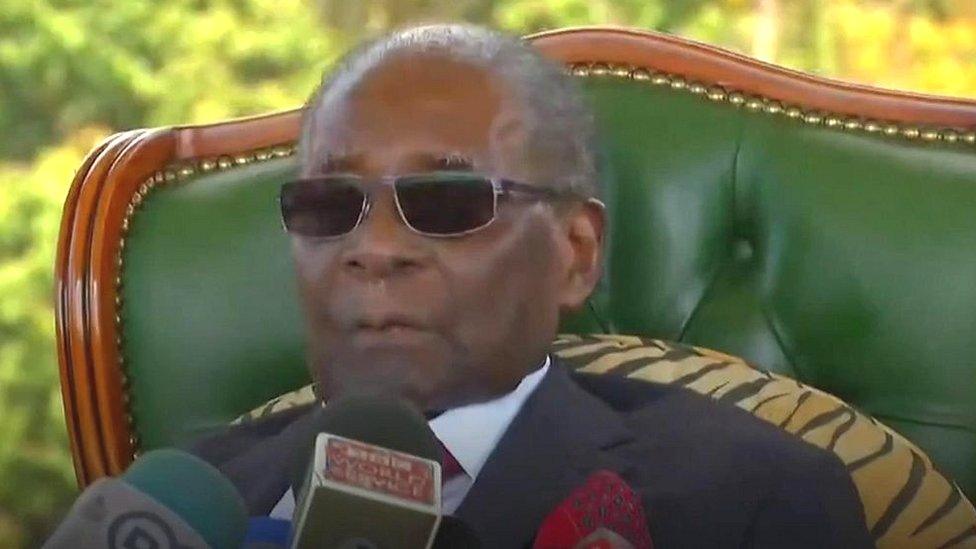
- Published30 August 2023
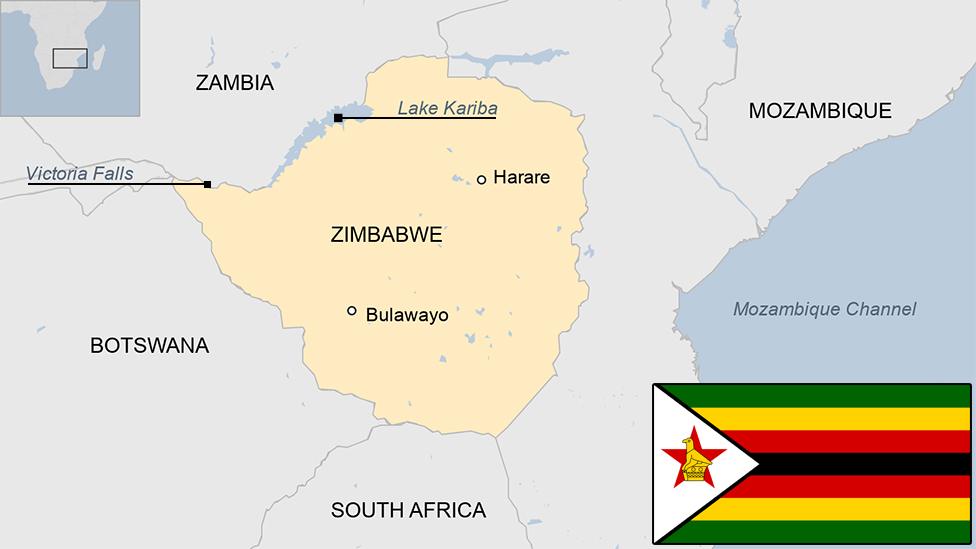
- Published30 July 2018
